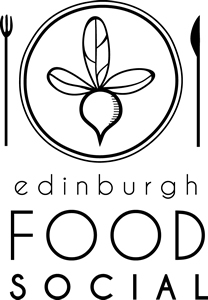Curing Fish Four Ways
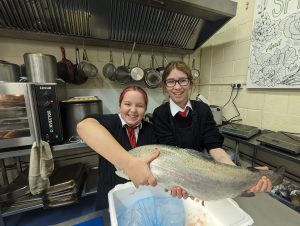
Young people learning to cure a trout
Curing was originally used thousands of years ago as a preservation method to prevent meat, fish and vegetables going to waste.
Originating from the Latin term curare – “to take care of” – the process of curing allowed fish to be stored for a long time without refrigeration. Today, the curing process is predominantly used as a way to flavour fish, rather than to preserve it.
There are four ways in which your fish can be cured: with an acid cure, dry salt cure, wet salt cure or a brine. Each offers its own benefits, and which to use comes down to practicality, time and quantity of fish that you’re curing.
-
Acid-curing uses citrus juice to ‘cook’ the fish prior to eating, commonly seen in dishes such as ceviche.
-
Dry and wet cures cures can be quicker, use less equipment, and less space and are great if you’re curing small quantities of fish.
-
Brines can be made and kept until ready to use, and will result in a more consistent product for large quantities of fish with flavour penetration throughout, however, it does (generally) take longer to cure, and there is more wastage than with dry-curing.
Speed of curing depends on whether you are using whole fish or fillets, whether the skin and scales are on, the temperature at which the fish is cured, the type of fish that you’re curing, the fat content of the fish, the size of fish and the method of curing that you choose. It is also a good idea to consider what you will use your fish for once it has cured – if it is to undergo further cooking, it may only need an hour or so to cure, whereas something eaten freshly cured may benefit from the stronger flavour imparted with a longer cure.
Sea bass, orange, fennel and chilli ceviche
Ceviche is a South American dish, originating in Peru, but with national variations now seen across across the continent. The key is leaving the fish to cure for long enough to ‘cook’ it, without over-curing, as this will make fish too firm and rubbery. Crisp up the discarded fish skin in the oven for garnish, and serve with tortilla chips to soak up all the juices.
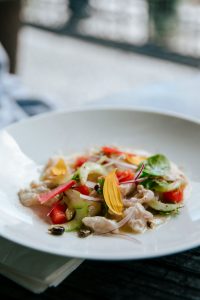
Ceviche with garnish
Ingredients
- 4 sea bass fillets (weighing around 100g each), skin removed and chopped into 1cm cubes
- 2 oranges, segmented, plus the juice from 4 oranges
- 1 lemon, juice only
- 1 lime, juice only
- 1 red chilli, finely diced
- 1 red onion, finely sliced
- 1 tbsp fennel seeds, lightly toasted
- 1 fennel bulb, finely sliced
- 2 tbsp rapeseed oil
- Pinch caster sugar
- Sea salt, to season
Method
- Combine the chopped fish, chilli, red onion, fennel seeds and citrus juice in a bowl – if the fish is not completely covered, add more citrus juice
- Cover with clingfilm and leave in the refrigerator for around 90 minutes, until the fish is opaque
- Add in the segmented orange, fennel, rapeseed oil, caster sugar and sea salt
- Taste and adjust seasoning as necessary
Citrus-cured trout
This is a dry cure recipe, the flavourings of which can be altered with other herbs and spices to your liking. With a dry cure, always use a 1:1 ratio of sea salt to sugar, and make enough cure to cover both sides of the fish. If you are adding whole dried spices to your cure, crush them in a pestle and mortar first to help release the flavour.
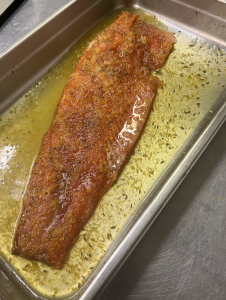
Citrus-cured trout in progress
Ingredients
- 1 side of trout (weighing 500-600g), skinned and pin-boned
- 250g sea salt
- 250g caster sugar
- 2 lemons, zest only
- 1 lime, zest only
Method
- Mix together the salt, sugar and citrus zest
- Spread half of the cure onto a large tray
- Place the trout on top, and cover with the rest of the cure
- Cover the tray with clingfilm, and refrigerate for 12 hours
- If the fish feels firm to the touch, wipe off excess cure and rinse the fish under cold water – if still soft, leave to cure for another few hours
- Dry the fish on a clean kitchen towel, and slice thinly to serve
Beetroot-cured brill
This is a wet-cure recipe, where a liquid is simply added to a dry salt cure. Beetroot juice adds a wonderful bright pink colour to the fish. We recommend serving this alongside a beetroot, apple and fennel salad.

Brill before being filleted
Ingredients
- 2 fillets of brill (weighing 500-600g each), skin on
- 2 tbsp sea salt
- 2 tbsp caster sugar
- 2 tsp toasted coriander seeds, crushed
- 2 tsp mixed peppercorns, crushed
- 2 tsp dill, finely chopped
- 3 tbsp beetroot
Method
- Mix together the salt, sugar, seeds and dill
- Spread one third of the cure onto a tray
- Lay one piece of fish skin-side down on the salt mixture, and sprinkle with another third of the salt cure and half of the vodka
- Lay the other fillet of fish skin-side up on top, and sprinkle with the remaining third of the cure and half of the vodka
- Cover with clingfilm and chill for 24 hours
- Unwrap and turn the fish over, spooning over the now liquid brine
- Re-cover with clingfilm, and chill for another 24 hours
- Repeat this process once or twice (3-4 days total curing)
- Rinse the fish under cold water, dry well and rewrap in clingfilm
- The cured fish will keep for up to 5 days in the fridge, or 6 months in the freezer
Soft herb brine for fish
The most labour-intensive of all the salt cures is the brine, which requires cooking both prior to and post-curing. This brine pairs wonderfully with seafood, as it is full of light and fresh flavours that won’t overpower the delicate fish. The brine also helps to season the fish, which prevents it from falling apart during cooking.
Ingredients
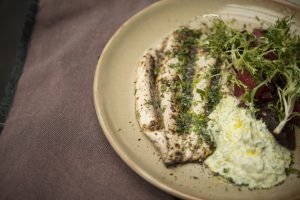
Cooked fish with herbs
- 1L water
- 100g salt
- 1 lemon, zest only
- 1 lime, zest only
- 1 tsp coriander seeds, lightly toasted
- 5g wakame or kombu
- 1 handful of soft herbs, stalk attached – a mix of dill, chervil, coriander and parsley work well
Method
- Place the water, seaweed, salt and coriander seeds in a saucepan, and bring to the boil
- Once all of the salt has dissolved, remove from the heat and add in the citrus zest and herbs
- Leave to cool completely before using
- To use, submerge the fish in the brine for 15-30 minutes (depending on the size), then rinse with cold water and pat dry before cooking.
